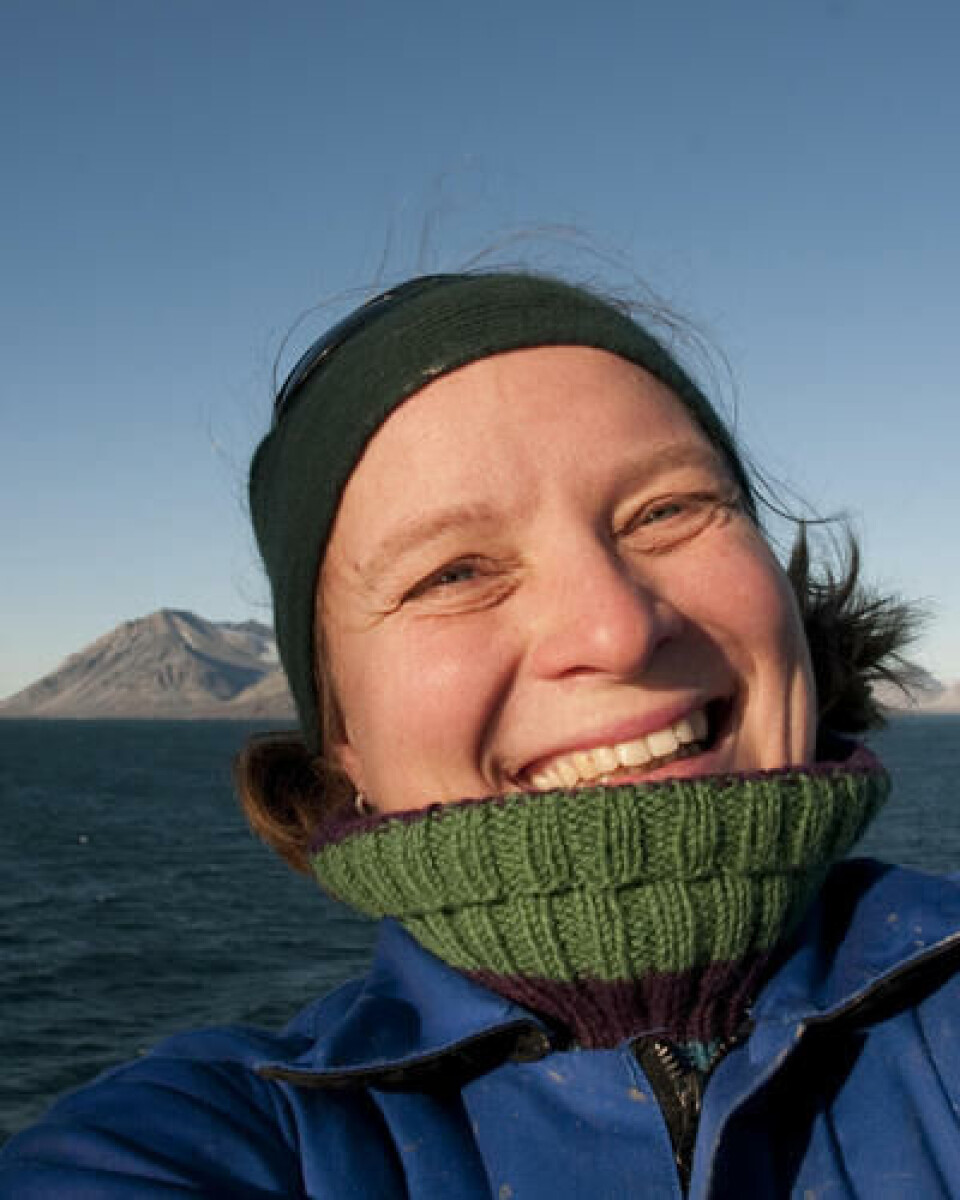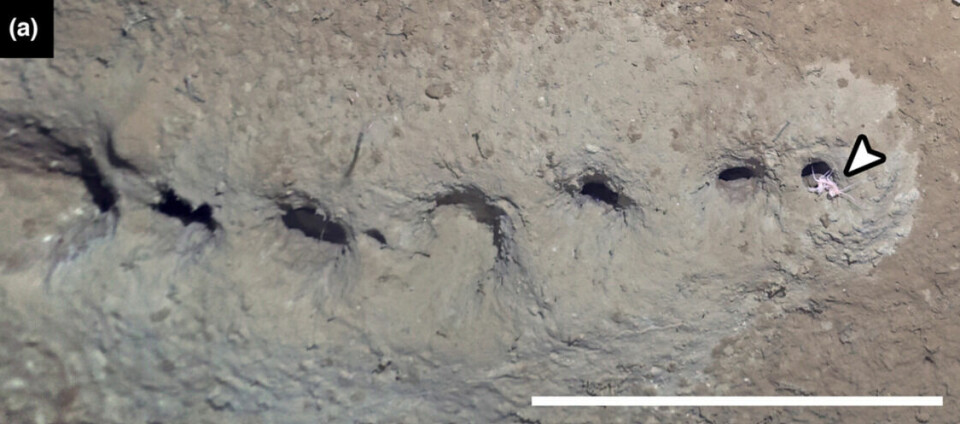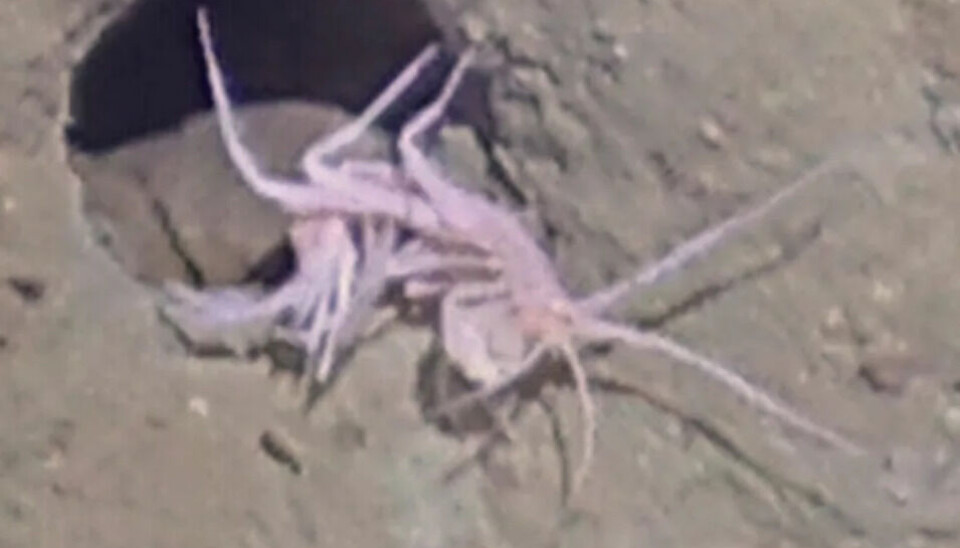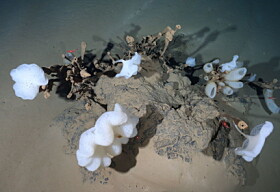
Scientists have once again found mysterious holes in the deep sea
Twenty years ago, the Norwegian research ship ‘G.O. Sars’ came upon rows of holes on the seabed in the middle of the Atlantic Ocean. Now, strangely enough, German scientists have found the same thing in the Pacific Ocean. Anne Helene Tandberg from Bergen was on the last expedition.
The Bering Strait lies in the most northerly part of the Pacific Ocean.
Last year, researchers were surprised to come across several rows of holes on the seabed there.
They were found at a depth of just over 3,500 metres.
In March, sciencenorway.no described how scientists on board the Norwegian research ship ‘G.O. Sars’ in 2004 had sent an unmanned remote-controlled submarine — an ROV — with a camera down to the seabed in the middle of the Atlantic Ocean, north of the Azores archipelago.
“All of a sudden, and completely unexpectedly, a series of tracks suddenly appeared on the screen, from a depth of around 2,000 metres,” Odd Aksel Bergstad told sciencenorway.no about their find from nearly 20 years ago.
The now-retired researcher at the Institute of Marine Research led the voyage to the mid-Atlantic at the time.
In a publication last year, he and American researcher Michael Vecchione questioned why no one had been able to explain the reason for these holes in the decades since 2004.
Animals in extreme places
Have other scientists finally found the answer, deep at the bottom of the Pacific?
Anne Helene Tandberg is a researcher at the University Museum of Bergen and an expert on marine animals that live in extreme conditions.
Animals in the deep sea live under tremendous pressure. It is also cold and completely dark in the depths of the ocean.
The Mariana Trench, southeast of Japan, is the world's deepest location at just over 11,000 metres deep. Here, the pressure can be compared to having a hundred elephants standing together on top of your head, if that were somehow possible.
Nevertheless, many organisms are able to live under these extreme conditions, deep down on the ocean floor.

Last summer, Tandberg took part in an expedition on board the German research ship ‘R/V SONNE’ to the northern part of the Pacific Ocean. The main goal she and the researchers at the Senckenberg Institute in Germany had was to look for life in the 7,000 metre deep Aleutian Trench.
“We also wanted to do some research a little further north, up in the Bering Strait, between Alaska and Russia,” she said.
Here, what Tandberg describes as a ‘huge lump’ was lowered from the research ship. It was full of film cameras and ordinary cameras that can take high-resolution single images in the ocean’s depths.
Holes on the seabed
Tandberg and her colleagues sat and watched images stream up from below.
“That's when we suddenly saw a lot of holes on the seafloor,” she said to sciencenorway.no. “The holes were in rows, one after the other.”
“Eventually we found a total of 200 of them, in three different places,” she said.
Tandberg says that the researchers were able to quickly establish that there was a horizontal tunnel — or a kind of passage — under each of these rows.
Saw a hundred different animals on film
“In the videos and pictures we took, we recorded almost a hundred different species of animals that lived in this location, around 3,500 metres down,” she said.
“These were just the animals we could see, because there are also hundreds of other small animals down there. We find these creatures when we analyse samples we take from the depths,” she said.
The researchers on ‘R/V SONNE’ agreed that it must have been one of the slightly larger animals they could see in the images that was responsible for making the holes.
The fish they had observed were too big, they thought. Worms on the seabed were also excluded. So were the sea urchins they saw.
“Then suddenly my colleague Angelika Brandt spotted an almost-white animal with a tinge of pink,” Tandberg said. “It was a crustacean, an amphipod. It was coming out of one of the holes.”
This was an animal Brandt took notice of, because it resembled something a colleague of hers had observed on the seabed in Antarctica in the 1980s.


A previously unknown animal
With a special tool, the researchers managed to catch a crustacean, the same as the one they had seen coming out of the hole deep on the ocean floor.
“When we found it, it turned out to be an animal that has probably not been recorded before,” said Tandberg, who was the scientist on the expedition with the most knowledge about crustaceans. “But I was able to determine that it belonged to the crustacean genus Maera.”
“The animal was the right size in relation to the holes, and it has front feet that are specially designed for digging,” she said.
The researchers think the clay that is visible on the side of the holes in the pictures could be from when the crustacean pushes its way out of the holes.
Tandberg and her colleagues' hypothesis is that the animal wants to dig a tunnel in which it can remain.
But instead of carrying the clay it digs all the way to an opening at the end of the tunnel, the crustacean can get rid of the clay more easily if it is thrown up through one of the holes in the row.
In other words, this is one clever crustacean.
The researchers assume that the amphipod is either digging for food or that it may be creating a hiding place for its young.
At the same time, they wonder how a crustacean so incredibly far down in the cold darkness of the sea could have figured out that it should use such advanced engineering.
Not an answer for the holes in the Atlantic
At the same time, Tandberg and her colleagues are quite sure of something else:
They have not found an answer as to what made the holes Odd Aksel Bergstad and his colleagues found in the Atlantic almost 20 years ago.
“The rows of holes they found north of the Azores did not have any passageways or tunnels underneath,” Tandberg said. “So it cannot have been the same animal that made those rows of holes. There must be something else.”
That means the mystery of the holes in the depths of the Atlantic Ocean, discovered 20 years ago, remains unsolved.
Translated by Nancy Bazilchuk
References:
Julia D. Sigwart, Anne Helene Tandberg et.al: Heterogeneity on the abyssal plains: A case study in the Bering Sea. Frontiers in Marine Science, 2023.
Michael Vecchione and Odd Aksel Bergstad: Numerous Sublinear Sets of Holes in Sediment on the Northern Mid-Atlantic Ridge Point to Knowledge Gaps in Understanding Mid-Ocean Ridge Ecosystems. Frontiers in Marine Science, 2022.
———
Read the Norwegian version of this article at forskning.no




































